Top 10 Power Transformer Manufacturers: A Comprehensive Guide?| CHBEB
Choosing the right power transformer manufacturer can feel overwhelming. With global leaders and regional suppliers offering different strengths, buyers risk delays, high costs, or mismatched solutions. This guide explores the top 10 power transformer manufacturers worldwide, comparing their specialties, market presence, and innovations, so you can make the best supplier choice for your project.

As someone who’s worked in the power industry for years, I’ve seen firsthand how crucial choosing the right manufacturer can be. Let’s dive into the world of power transformer manufacturing and uncover the industry leaders.
Global Leaders: The Top 10 Power Transformer Manufacturers Worldwide?
Are you wondering which companies dominate the global power transformer market? The answer might surprise you, as the landscape has changed significantly in recent years.
The top 10 power transformer manufacturers worldwide include ABB, Siemens, GE, Hitachi Energy, TBEA, TOSHIBA, Mitsubishi Electric, Hyundai Electric, Hyosung Heavy Industries, and WEG. These companies lead in innovation, market share, and global presence.
World map highlighting locations of top transformer manufacturers
Let’s take a closer look at these industry giants:
1. ABB: High-Voltage & Digital Transformer Supplier

- Headquarters: Zurich, Switzerland
- Specialties: High-voltage transformers, digital solutions
- Notable Project: Supplied transformers for the Three Gorges Dam in China
I once visited ABB’s transformer factory in Sweden. Their attention to detail and commitment to innovation was impressive. They were testing a new type of eco-friendly insulating oil that could revolutionize the industry.
2. Siemens Energy: Gas-Insulated Power Transformers Explained
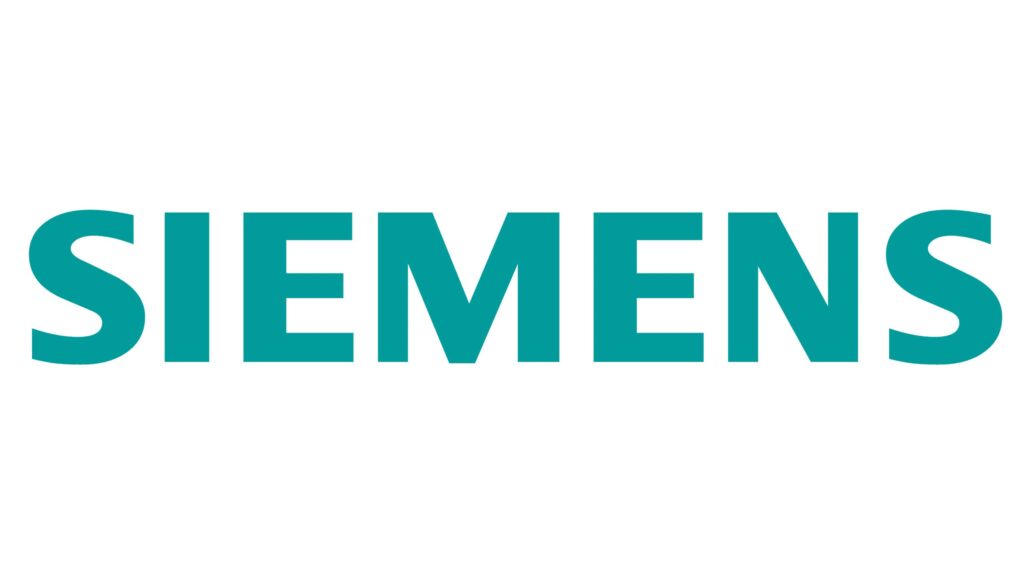
- Headquarters: Munich, Germany
- Specialties: Large power transformers, grid solutions
- Innovation: Pioneers in gas-insulated transformers
During a conference, I had the chance to speak with a Siemens engineer about their new gas-insulated transformers. The technology’s potential for reducing substation footprints in urban areas is game-changing.
3. GE: Reliable Power & Distribution Transformers for Global Projects
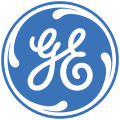
- Headquarters: Boston, USA
- Specialties: Power transformers, distribution transformers
- Strength: Wide range of products for various applications
I’ve worked with GE transformers in several projects. Their reliability in harsh environments, like offshore wind farms, has always impressed me.
4. Hitachi Energy: Ultra-High Voltage & Smart Grid Solutions

- Headquarters: Zurich, Switzerland
- Specialties: Ultra-high voltage transformers, digital solutions
- Notable Achievement: World record for the highest AC transformer voltage level (1,200 kV)
I had the opportunity to tour Hitachi Energy’s research center. Their work on integrating AI into transformer monitoring systems is fascinating and could significantly improve grid reliability.
5. TBEA: China’s Emerging Power Transformer Giant
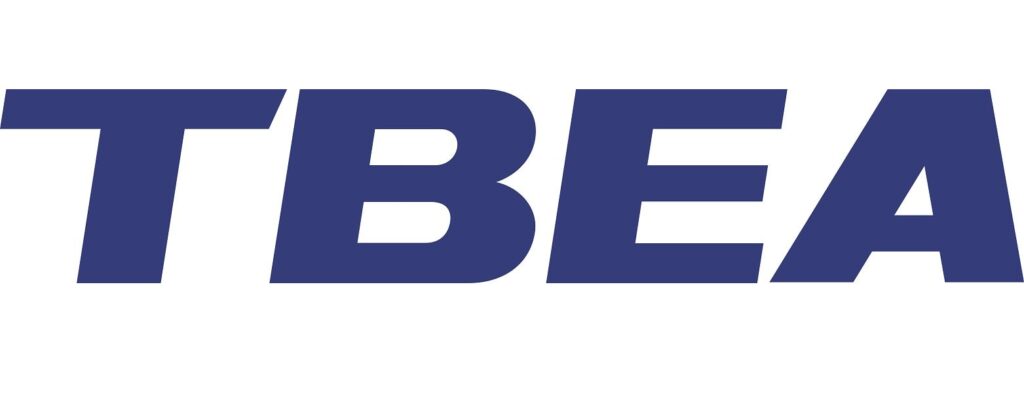
- Headquarters: Xinjiang, China
- Specialties: Power transformers, transmission equipment
- Strength: Strong presence in emerging markets
During a project in Southeast Asia, I worked with TBEA transformers. Their ability to deliver high-quality products at competitive prices has helped them gain significant market share.
6. TOSHIBA: Energy-Efficient Amorphous Core Transformers

- Headquarters: Tokyo, Japan
- Specialties: Large power transformers, amorphous metal transformers
- Innovation: Leaders in energy-efficient transformer technology
I once attended a workshop by TOSHIBA on their amorphous metal core transformers. The energy savings potential is impressive, especially for utilities looking to reduce losses in their distribution networks.
7. Mitsubishi Electric: Compact & Mobile Transformer Designs

- Headquarters: Tokyo, Japan
- Specialties: Ultra-high voltage transformers, mobile transformers
- Strength: Advanced technology in compact designs
In a recent substation upgrade project, we used Mitsubishi’s mobile transformers. Their compact design and ease of deployment were crucial in minimizing downtime during the upgrade.
8. Hyundai Electric: Smart Grid & Energy Storage Transformer Solutions

- Headquarters: Seoul, South Korea
- Specialties: Power transformers, smart grid solutions
- Notable Project: Supplied transformers for the world’s largest energy storage system in South Korea
I visited Hyundai Electric’s smart factory in Korea. Their use of automation and IoT in transformer manufacturing is setting new standards for quality control and efficiency.
9. Hyosung Heavy Industries: Green Transformer Technology & Global Expansion

- Headquarters: Seoul, South Korea
- Specialties: Extra high voltage transformers, green transformers
- Strength: Rapid growth in international markets
During a conference, I was impressed by Hyosung’s presentation on their green transformer technology. Their focus on eco-friendly materials and designs is addressing a growing concern in the industry.
10. WEG: Latin America’s Leading Distribution Transformer Supplier
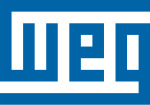
- Headquarters: Jaraguá do Sul, Brazil
- Specialties: Distribution transformers, compact substations
- Strength: Strong presence in Latin American markets
I’ve seen WEG transformers perform exceptionally well in challenging environments, like the Amazon rainforest. Their ability to design for extreme conditions has earned them a solid reputation.
| Manufacturer | Headquarters | Key Specialty | Notable Achievement |
|---|---|---|---|
| ABB | Switzerland | High-voltage transformers | Three Gorges Dam project |
| Siemens Energy | Germany | Gas-insulated transformers | Urban substation solutions |
| GE | USA | Wide product range | Offshore wind farm reliability |
| Hitachi Energy | Switzerland | Ultra-high voltage | 1,200 kV AC transformer |
| TBEA | China | Emerging market presence | Competitive pricing |
| TOSHIBA | Japan | Amorphous metal transformers | Energy efficiency leadership |
| Mitsubishi Electric | Japan | Compact designs | Mobile transformer solutions |
| Hyundai Electric | South Korea | Smart grid integration | World’s largest ESS project |
| Hyosung | South Korea | Green transformers | Eco-friendly innovations |
| WEG | Brazil | Distribution transformers | Extreme environment designs |
In my experience, each of these manufacturers has its strengths and specialties. The choice often depends on specific project requirements, budget constraints, and regional factors. For instance, when working on a project in a densely populated urban area, Siemens’ gas-insulated transformers were the perfect fit due to their compact size and high reliability.
One aspect that often surprises people is the level of customization these manufacturers offer. During a recent project for a renewable energy plant, we needed a transformer that could handle highly variable loads. ABB’s engineers worked closely with us to design a custom solution that not only met our technical requirements but also helped optimize the overall system efficiency.
The focus on digital solutions and smart grid integration is a common thread among these top manufacturers. I recently visited Hitachi Energy’s smart transformer factory, where they’re implementing AI and IoT technologies in their manufacturing process. This not only improves product quality but also enables advanced features like real-time monitoring and predictive maintenance, which are becoming increasingly important for grid operators.
Sustainability is another area where these manufacturers are making significant strides. TOSHIBA’s amorphous metal transformers, for example, can reduce no-load losses by up to 70% compared to traditional silicon steel core transformers. In a large-scale distribution network upgrade I worked on, implementing these high-efficiency transformers resulted in substantial energy savings and reduced carbon emissions for the utility company.
The competition among these top manufacturers drives continuous innovation. At a recent industry conference, I was amazed by the advancements in transformer technology presented by companies like Hyundai Electric and Hyosung. From novel cooling systems to eco-friendly insulation materials, these innovations are pushing the boundaries of what’s possible in power transmission and distribution.
It’s worth noting that while these are the top global players, the choice of manufacturer often depends on regional factors as well. For projects in emerging markets, companies like TBEA and WEG often have an edge due to their strong local presence and understanding of specific market needs. In a rural electrification project I consulted on in South America, WEG’s expertise in designing transformers for challenging environments was invaluable.
As the power industry evolves, especially with the increasing integration of renewable energy sources and the development of smart grids, these top manufacturers are at the forefront of addressing new challenges. Whether it’s developing transformers that can handle the variable output of wind and solar farms or creating smart transformers that can actively participate in grid management, these companies are shaping the future of power systems.
China’s Power Transformer Manufacturers: TBEA, XD, Tianwei, Sieyuan, Huapeng
Are you curious about the powerhouses driving China’s massive transformer industry? The Chinese market has seen explosive growth, with some manufacturers now competing on the global stage.
China’s leading transformer manufacturers include TBEA, China XD Group, Tianwei Group, Sieyuan Electric, and Huapeng Transformer. These companies dominate the domestic market and are increasingly expanding their global footprint.

China transformer manufacturing hubs map
Let’s explore these Chinese giants in more detail:
1. TBEA (Tebian Electric Apparatus)

- Headquarters: Xinjiang, China
- Specialties: Power transformers, transmission equipment
- Global Reach: Significant presence in Asia, Africa, and South America
I’ve had the opportunity to visit TBEA’s massive manufacturing facility in Xinjiang. The scale of their operation is truly impressive, with the capacity to produce transformers up to 1,100 kV.
2. China XD Group
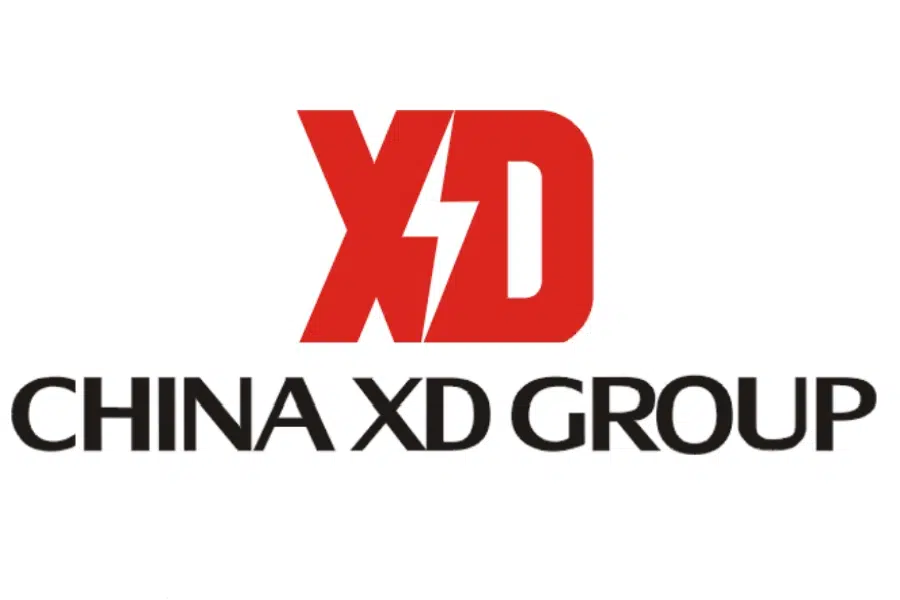
- Headquarters: Xi’an, China
- Specialties: High-voltage and ultra-high-voltage transformers
- Notable Achievement: Supplied transformers for China’s West-East Electricity Transmission Project
During a conference in Beijing, I spoke with engineers from China XD Group about their ultra-high-voltage transformer technology. Their advancements in this field are pushing the boundaries of long-distance power transmission.
3. Tianwei Group

- Headquarters: Baoding, China
- Specialties: Power transformers, reactors, and new energy equipment
- Strength: Integrated manufacturing capabilities
I once toured Tianwei’s research and development center. Their focus on integrating transformer technology with renewable energy systems is particularly noteworthy.
4. Sieyuan Electric

- Headquarters: Shenzhen, China
- Specialties: Smart grid equipment, power transformers
- Innovation: Leaders in digital and intelligent transformer solutions
At a smart grid expo in Shanghai, I was impressed by Sieyuan’s demonstration of their intelligent transformer monitoring system. The potential for predictive maintenance and improved grid reliability is significant.
5. Huapeng Transformer

- Headquarters: Shenyang, China
- Specialties: Distribution transformers, special transformers
- Strength: Customized solutions for specific industries
I worked with Huapeng transformers on a project for a large steel mill. Their ability to design transformers for harsh industrial environments was crucial to the project’s success.
| Manufacturer | Headquarters | Key Specialty | Notable Project/Achievement |
|---|---|---|---|
| TBEA | Xinjiang | Ultra-high voltage | 1,100 kV transformer production |
| China XD Group | Xi’an | UHV transformers | West-East Transmission Project |
| Tianwei Group | Baoding | Integrated manufacturing | Renewable energy integration |
| Sieyuan Electric | Shenzhen | Smart grid solutions | Intelligent monitoring systems |
| Huapeng Transformer | Shenyang | Customized industrial transformers | Steel mill project |
In my experience working with Chinese manufacturers, I’ve been consistently impressed by their rapid technological advancements and manufacturing capabilities. During a recent visit to TBEA’s R&D center, I saw firsthand how they’re investing heavily in developing next-generation transformer technologies, particularly in the area of ultra-high voltage transmission.
One aspect that often surprises Western colleagues is the scale and efficiency of Chinese manufacturing operations. At China XD Group’s facility, I witnessed the production of a 1,000 MVA transformer from start to finish. The level of automation and quality control was on par with, if not exceeding, what I’ve seen in European factories.
The focus on smart grid technologies among Chinese manufacturers is particularly noteworthy. Sieyuan Electric, for instance, is at the forefront of integrating IoT and big data analytics into transformer design and operation. During a pilot project I consulted on, their smart transformers provided real-time data that significantly improved grid management and reduced downtime.
Customization and flexibility are areas where Chinese manufacturers often excel. In a challenging project for a remote mining operation, Huapeng Transformer was able to design and deliver a custom transformer that met the specific environmental and operational requirements within a tight timeline. This level of responsiveness is a key strength in the competitive global market.
The integration of transformer technology with renewable energy systems is another area where Chinese manufacturers are making significant strides. Tianwei Group, for example, is developing innovative solutions for large-scale solar and wind farms. Their transformers are designed to handle the variable loads and unique challenges posed by renewable energy sources.
It’s important to note that while these companies dominate the domestic Chinese market, they are increasingly competing on the global stage. I’ve seen TBEA and China XD Group transformers in projects across Asia, Africa, and South America. Their ability to offer competitive pricing without compromising on quality is disrupting traditional market dynamics.
The rapid growth of China’s transformer industry has not been without challenges. Quality control and intellectual property issues have been concerns in the past. However, from my observations, leading Chinese manufacturers have made significant strides in addressing these issues. Many have obtained international certifications and are actively collaborating with global partners to enhance their technological capabilities.
As the global power industry evolves, particularly with the push towards renewable energy and smart grids, Chinese transformer manufacturers are positioning themselves at the forefront of innovation. Their massive domestic market provides a unique testing ground for new technologies, allowing for rapid iteration and improvement.
The future of the global transformer industry will likely see increased competition and collaboration between established Western manufacturers and these Chinese powerhouses. As someone who has worked with transformers from various global manufacturers, I’m excited to see how this competition drives innovation and improves the overall quality and efficiency of power distribution worldwide.
Industry Giants: Who Leads the Power Transformer Market Share?
Have you ever wondered which companies truly lead the global power transformer industry? The landscape might be different from what you expect, with a mix of traditional Western giants and rising Asian powerhouses.
The power transformer manufacturing sector is dominated by a mix of global conglomerates and specialized manufacturers. Key players include ABB, Siemens Energy, GE, Hitachi Energy, and TBEA, with significant market share also held by companies like TOSHIBA, Mitsubishi Electric, and emerging Chinese manufacturers.
Let’s delve into the factors that make these companies industry leaders:
Market Share and Global Presence
ABB (Asea Brown Boveri):
- Estimated global market share: 15-20%
- Present in over 100 countries
- I’ve seen ABB transformers in projects from the Arctic Circle to the Sahara Desert
Siemens Energy:
- Market share: Around 15%
- Strong presence in Europe, Americas, and Asia
- Their gas-insulated transformers are revolutionizing urban substation design
General Electric (GE):
- Market share: Approximately 10-15%
- Extensive network in North America and growing presence in emerging markets
- I’ve been impressed by GE’s adaptability in various international projects
Technological Innovation
Hitachi Energy:
- Leaders in ultra-high voltage technology
- Pioneers in digital transformer solutions
- Their smart transformer technology is setting new standards in grid management
TOSHIBA:
- Innovators in amorphous metal core transformers
- Focus on energy efficiency and loss reduction
- I’ve seen their transformers significantly reduce energy losses in distribution networks
Emerging Market Dominance
TBEA:
- Largest transformer manufacturer in China
- Rapidly expanding global footprint, especially in Asia and Africa
- Their competitive pricing is changing market dynamics in many regions
Hyundai Electric & Hyosung Heavy Industries:
- Korean giants with growing international presence
- Strong in both power and distribution transformers
- I’ve been impressed by their quality improvements in recent years
Specialized Expertise
Mitsubishi Electric:
- Known for high-quality, reliable transformers
- Specialists in transformers for specific applications like HVDC
- Their attention to detail in custom projects is outstanding
WEG:
- Dominates the Latin American market
- Expanding globally in distribution transformers
- Excels in transformers for challenging environments
| Manufacturer | Global Market Share | Key Strength | Notable Innovation |
|---|---|---|---|
| ABB | 15-20% | Global presence | Digital transformer solutions |
| Siemens Energy | ~15% | European market leader | Gas-insulated transformers |
| GE | 10-15% | North American dominance | Renewable energy integration |
| Hitachi Energy | 10-15% | Ultra-high voltage tech | Smart transformer systems |
| TBEA | 8-10% | Emerging market growth | Cost-effective large-scale production |
| TOSHIBA | 5-8% | Energy efficiency | Amorphous metal core technology |
| Mitsubishi Electric | 5-7% | Specialized applications | HVDC transformer expertise |
| Hyundai & Hyosung | 5-7% | Asian market strength | Smart grid integration |
| WEG | 3-5% | Latin American leader | Extreme environment designs |
In my years of experience in the power industry, I’ve witnessed significant shifts in the transformer manufacturing landscape. The dominance of traditional Western giants like ABB, Siemens, and GE is being challenged by the rapid rise of Asian manufacturers, particularly from China and South Korea.
One trend that’s particularly interesting is the increasing focus on technological innovation. During a recent visit to Hitachi Energy’s research center, I was amazed by their work on digital twin technology for transformers. This allows for real-time monitoring and predictive maintenance, potentially revolutionizing how we manage and maintain power grids.
The competition in ultra-high voltage technology is fierce. I remember a project where we were considering both ABB and TBEA for a 1,100 kV transformer. The technical capabilities were comparable, but TBEA’s competitive pricing ultimately won them the contract. This scenario is becoming increasingly common, especially in emerging markets.
Energy efficiency is another area where we’re seeing significant advancements. TOSHIBA’s amorphous metal core transformers, for instance, can reduce no-load losses by up to 70% compared to traditional silicon steel cores. In a large-scale distribution network upgrade I worked on, implementing these high-efficiency transformers resulted in substantial energy savings for the utility company.
The specialization of certain manufacturers is also worth noting. Mitsubishi Electric, for example, has carved out a niche in HVDC (High Voltage Direct Current) transformer technology. Their expertise was crucial in a recent offshore wind farm project I consulted on, where efficient long-distance power transmission was a key challenge.
Emerging players like Hyundai Electric and Hyosung Heavy Industries are making significant strides in smart grid technology. At a recent industry conference, I was impressed by their presentations on integrating transformers with advanced grid management systems. This integration is becoming increasingly important as we move towards more distributed and renewable energy sources.
The dominance of these industry giants is not just about market share; it’s also about their ability to drive industry standards and innovations. For instance, ABB’s work on eco-efficient transformers is setting new benchmarks for environmental sustainability in the industry. During a factory tour, I saw how they’re incorporating biodegradable insulating fluids and recycled materials into their designs.
However, it’s important to note that market dominance doesn’t always equate to being the best choice for every project. In my experience, the selection of a transformer manufacturer often depends on specific project requirements, regional factors, and long-term service capabilities. For example, while working on a rural electrification project in South America, WEG’s understanding of local conditions and their robust after-sales support made them the ideal choice, despite not being the largest global player.
The future of the transformer manufacturing sector is likely to be shaped by several key factors:
Renewable Energy Integration: Manufacturers who can provide transformers optimized for the variable loads of renewable sources will have a significant advantage.
Smart Grid Technology: The ability to produce smart, connected transformers will become increasingly important.
Energy Efficiency: As global energy demand grows, the focus on reducing losses in power transmission and distribution will intensify.
Sustainability: Environmental considerations, including the use of eco-friendly materials and designs, will play a larger role in manufacturer selection.
Cost-Effectiveness: Especially in emerging markets, the ability to provide high-quality transformers at competitive prices will be crucial.
As the industry evolves, we’re likely to see more consolidation and strategic partnerships. For instance, the recent formation of Hitachi Energy (formerly Hitachi ABB Power Grids) demonstrates how companies are joining forces to combine their strengths and expand their market reach.
In conclusion, while there are clear industry giants in the power transformer manufacturing sector, the landscape is dynamic and constantly evolving. As someone who has worked with transformers from various manufacturers across different continents, I can say that each of these companies has its strengths and specialties. The key for buyers and engineers is to understand these nuances and choose the manufacturer that best fits the specific needs of their project and region.
Distribution Transformer Manufacturers: ABB, Siemens, GE, Schneider, Eaton
Are you curious about which companies lead the pack in distribution transformer manufacturing? This segment of the market is crucial for the final step in bringing power to end-users.
The largest distribution transformer manufacturers include ABB, Siemens, GE, Schneider Electric, and Eaton. These companies dominate the global market, with strong competition from regional players like TBEA in China, Crompton Greaves in India, and Howard Industries in the USA.

Assembly line of distribution transformers in a modern factory
Let’s explore these distribution transformer powerhouses in more detail:
Global Leaders
ABB:
- Market Position: One of the top global manufacturers
- Specialties: Wide range of distribution transformers, including eco-efficient designs
- Innovation: Leaders in digital distribution transformer solutions
I once visited ABB’s smart factory in Sweden. Their automated production line for distribution transformers was impressive, ensuring high quality and consistency.
Siemens:
- Market Strength: Strong presence in Europe and North America
- Focus: Energy-efficient and environmentally friendly transformers
- Notable: Pioneers in vegetable oil-filled distribution transformers
During a project in Germany, I saw firsthand how Siemens’ vegetable oil transformers reduced environmental risks in a sensitive area.
General Electric (GE):
- Market Reach: Extensive network, especially in North America
- Product Range: From small residential to large industrial distribution transformers
- Strength: Customization capabilities for specific market needs
I’ve worked with GE transformers in various projects. Their ability to tailor solutions for unique grid requirements is impressive.
Regional Powerhouses
TBEA (China):
- Dominance: Largest manufacturer in China
- Global Expansion: Increasing presence in Asia, Africa, and South America
- Competitive Edge: High-quality products at competitive prices
In a recent project in Southeast Asia, TBEA’s transformers offered a great balance of performance and cost-effectiveness.
Crompton Greaves (India):
- Market Position: Leading manufacturer in India
- Specialization: Expertise in tropical climate designs
- Growth: Expanding presence in Middle East and Africa
I’ve seen Crompton Greaves transformers perform exceptionally well in high-temperature, high-humidity environments.
Howard Industries (USA):
- Focus: Strong in the North American market
- Niche: Specializes in custom and standard distribution transformers
- Strength: Quick turnaround on custom orders
For a urgent replacement project in a rural area, Howard Industries’ ability to deliver a custom transformer quickly was crucial.
Emerging Players
Schneider Electric:
- Market Strategy: Growing presence in distribution transformer market
- Innovation: Focus on smart grid-ready transformers
- Sustainability: Leaders in eco-design principles
I was impressed by Schneider’s presentation on their smart transformers at a recent industry conference. Their integration with grid management systems is cutting-edge.
Eaton:
- Market Position: Strong in industrial and utility sectors
- Product Range: Comprehensive lineup of liquid-filled and dry-type transformers
- Innovation: Advanced monitoring and diagnostic features
In an industrial project, Eaton’s transformers with built-in monitoring capabilities provided valuable insights into power quality issues.
| Manufacturer | Global Presence | Key Strength | Notable Innovation |
|---|---|---|---|
| ABB | Worldwide | Comprehensive range | Digital solutions |
| Siemens | Europe, N. America | Eco-friendly designs | Vegetable oil insulation |
| GE | N. America, Global | Customization | Grid-specific solutions |
| TBEA | China, Asia, Africa | Cost-effectiveness | High-volume production |
| Crompton Greaves | India, Middle East | Tropical designs | Heat-resistant models |
| Howard Industries | USA | Quick custom orders | Rapid prototyping |
| Schneider Electric | Growing globally | Smart grid integration | IoT-enabled transformers |
| Eaton | Industrial focus | Monitoring capabilities | Advanced diagnostics |
In my experience, the distribution transformer market is highly competitive and regionally diverse. While global giants like ABB and Siemens have a significant market share, regional players often have advantages in understanding local needs and regulations.
One trend I’ve noticed is the increasing focus on energy efficiency. During a recent distribution network upgrade project, we compared transformers from several manufacturers. The difference in efficiency between standard and high-efficiency models was significant. Over the projected lifespan of the transformers, the energy savings from the high-efficiency models justified their higher initial cost.
Another interesting development is the rise of smart distribution transformers. In a pilot project I worked on, we installed Schneider Electric’s smart transformers in a suburban area. These transformers provided real-time data on load patterns, power quality, and even predicted potential failures. This level of insight is invaluable for utilities in optimizing their grid operations.
The competition in this sector is driving rapid innovation. For instance, I recently visited a TBEA factory where they were developing distribution transformers with advanced cooling systems, allowing for higher power density in compact designs. This is particularly useful in urban areas where space is at a premium.
Sustainability is becoming an increasingly important factor in transformer selection. Siemens’ vegetable oil-filled transformers, which I mentioned earlier, are a great example of this trend. Not only are they more environmentally friendly, but they also offer improved fire safety – a crucial consideration in many applications.
The ability to customize transformers for specific needs is another area where manufacturers differentiate themselves. In a project for a large data center, we needed transformers that could handle highly non-linear loads. Howard Industries’ willingness to work closely with us to design a custom solution was a key factor in their selection for the project.
As the power grid evolves, especially with the increasing integration of renewable energy sources and the development of microgrids, distribution transformer manufacturers are adapting their products. For example, I’ve seen new designs from ABB that are specifically optimized to handle the variable loads associated with solar and wind power.
The future of distribution transformer manufacturing is likely to be shaped by several factors:
- Increased focus on energy efficiency and loss reduction
- Integration of smart technologies for better grid management
- Development of more compact and powerful designs for urban applications
- Greater emphasis on environmental sustainability and safety
- Adaptation to the changing nature of power grids, including bi-directional power flow
In conclusion, while there are clear leaders in the distribution transformer market, the landscape is diverse and dynamic. The choice of manufacturer often depends on specific project requirements, regional factors, and long-term performance considerations. As someone who has worked with distribution transformers from various manufacturers across different projects, I can attest that understanding these nuances is crucial in making the right selection for any given application.
Conclusion: How to Choose the Right Transformer Supplier in 2025
The power transformer manufacturing industry is dominated by a mix of global giants and specialized regional players. From ABB and Siemens to emerging powerhouses like TBEA, each manufacturer brings unique strengths to the table. As the industry evolves with smart grid technology and renewable energy integration, choosing the right manufacturer becomes increasingly crucial for efficient and reliable power distribution.
Need help selecting the right transformer? Contact CHBEB for a tailored solution or Download our full transformer catalog here.
Free CHBEB Transformer Catalog Download
Get the full range of CHBEB transformers in one catalog.
Includes oil-immersed, dry-type, pad-mounted, and custom solutions.
Quick Message
Request A free quote
We'd like to work with you
- +86 15558785111
- [email protected]
- +86 15558785111
What We Do
CHINA BEI ER BIAN (CHBEB) GROUP, with 218 million in registered capital, originated from Beijing Beierbian Transformer Group. Headquartered in Beijing for R&D, it operates major production bases in Nanjing and Yueqing, producing high-quality products.
Latest Product
address
BeiJing
No 3,RongJing East Road,BeiJing Economic Technological Development Area,BeiJing,China
JiangSu
No 7️Xiangfeng Road,Jiangning,NanJing,JiangSu,China
WenZhou
No.211, Wei 16 Road, Industrial Zone, Yueqing, Wenzhou, Zhejiang, China.
XiangYang Industrial Zone ,YueQing,WenZhou,ZheJiang,China
contact us
- [email protected]
- +86 13057780111
- +86 13057780111
- +86 15558785111
Copyright © Bei Er Bian Group


